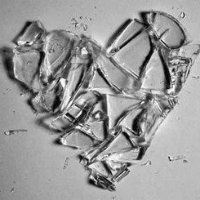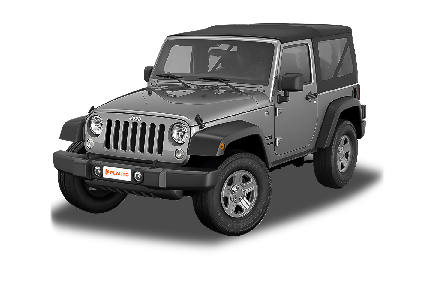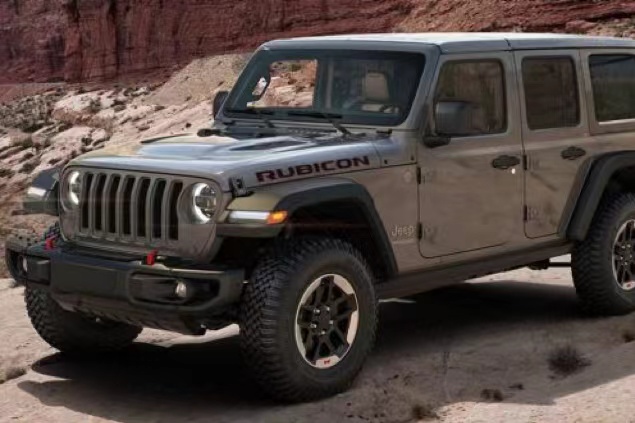Q
How to open the hood of Jeep Wrangler ?
To pop the hood on a Jeep Wrangler, first make sure the vehicle is completely turned off. Then, hop into the driver’s seat and look down to the left of the steering wheel, near the footwell—you’ll find a hood release lever with a little hood icon on it. Give that lever a good, firm pull, and you’ll hear the first latch release. Next, head around to the front of the Jeep. Stick your hand into the gap at the center of the hood’s leading edge, feel for the horizontal safety catch, push it to the right, and lift the hood up at the same time. If the hood feels heavy, use the prop rod to hold it open.
Now, keep in mind, the Wrangler’s a tough off-roader, so its hood latch setup is built extra sturdy to handle vibrations on the trail—you might need to put a bit more muscle into it than you would on a regular SUV. For our friends in Malaysia, with that hot and rainy weather, it’s a good idea to check the hood seal every now and then to make sure it’s not worn out. A busted seal can let water or dirt into the engine bay, and you don’t want that. Also, after the Jeep’s been baking in the sun, the hood gets really hot—grab a glove or a towel before you touch it to avoid burning yourself. Knowing how to open the hood properly is basic stuff, but it’s key for checking your oil, coolant, and other fluids regularly. Keep that engine happy, and you’ll keep rolling safe.
Special Disclaimer: This content is published by users and does not represent the views or position of PCauto.
Related Q&A
Q
Is a Jeep Wrangler good for long distances?
As a classic hardcore off-road vehicle, the Jeep Wrangler was initially designed more to handle complex terrains rather than ensure long-distance comfort. However, for Malaysian users, if they mainly drive on highways or city roads, it can still handle long-distance trips, but there are a few key points to keep in mind. The Wrangler's high seating position and boxy shape offer an expansive view, but the wind noise and fuel consumption are slightly higher than those of ordinary SUVs, especially when it's fitted with large off-road tires. Its suspension is tuned on the stiffer side, which is great for off-roading but a bit lacking in long-distance comfort. It is recommended to choose the high - end version equipped with an adaptive suspension to enhance the driving experience.
The interior space of the Wrangler is spacious, and the trunk is large enough to hold family luggage. However, the interior materials are mainly focused on practicality, and it lacks the luxurious feel of city SUVs. In Malaysia's hot climate, it is advisable to opt for an enhanced air - conditioning system and regularly check the cooling system. If you plan to explore the rainforests or remote areas of East Malaysia, the Wrangler's off - road capabilities will be a significant advantage. But when driving on pure roads, there may be more fuel - efficient and quieter options at the same price range.
Before a long - distance drive, be sure to check the chassis's sealing to prevent water ingress during rainy weather. Also, while the removable roof design is interesting, be aware of Malaysia's sudden downpours.
Q
Is the Jeep Wrangler spacious?
As a classic off-road SUV, the interior space design of the Jeep Wrangler focuses more on functionality than sheer spaciousness. The front row seats offer ample space and the driving view is wide. However, the legroom in the rear row is relatively compact, which is suitable for passengers of medium build. If you need more space, you can consider the four - door version. The trunk volume is approximately 498 liters in the standard state and can be expanded to nearly 1,300 liters when the rear seats are folded down, which is sufficient for daily use or loading off - road equipment.
For users in Malaysia, although the high ground clearance and the boxy shape of the Wrangler slightly affect the headroom, the convertible design (in some versions), commonly used in the tropical climate, can enhance the sense of openness. It should be noted that the core design of this vehicle lies in its off - road performance. The body - on - frame structure and the robust chassis will take up some cabin space. If you pursue ultimate comfort, you can test - drive city SUVs in the same class.
Its unique detachable doors and roof design can provide passengers with a unique open - air driving experience, which is especially enjoyable on the coastal roads or high - altitude sections in Malaysia. However, it is recommended that you visit the dealership first to experience whether the space meets your personal needs.
Q
What is the cargo capacity of a Jeep Wrangler?
The cargo capacity of the Jeep Wrangler varies depending on the model and configuration. The cargo volume of the two - door Wrangler is approximately 12.9 cubic feet (about 365 liters), while the four - door Wrangler Unlimited offers more space, around 31.7 cubic feet (about 898 liters). If you fully fold down the rear seats, the cargo capacity of the four - door version can be expanded to about 72.4 cubic feet (about 2050 liters), which is suitable for loading larger items.
In Malaysia, the Jeep Wrangler is favored by many outdoor enthusiasts for its strong off - road performance and practicality. The four - door version, in particular, is more suitable for family use or long - distance travel. It should be noted that the actual loading capacity can also be affected by vehicle configuration (such as the location of the spare tire) and modifications. It is recommended to conduct on - site inspections according to personal needs or consult the dealer before purchasing.
In addition, the modular design of the Wrangler allows owners to remove the doors and the roof, further increasing flexibility. However, pay attention to the weather changes in Malaysia to avoid sudden rainfall affecting the safety of the cargo.
Q
Can a Jeep Wrangler go off-road?
The Jeep Wrangler is a vehicle specifically designed for off - roading. Its powerful four - wheel drive system, high ground clearance, and robust body structure enable it to perform excellently on various complex terrains in Malaysia. Whether it's a muddy mountain road, sandy area, or rocky section, the Wrangler can handle them with ease.
Equipped with a lockable differential and an electronic anti - slip system, the Wrangler further enhances its ability to get out of trouble on low - traction surfaces. Meanwhile, its detachable roof and door design add more fun to outdoor adventures. In consideration of Malaysia's tropical climate and changeable terrains, the Wrangler's waterproof design and corrosion - resistant materials ensure the vehicle's durability.
Moreover, off - road enthusiasts in Malaysia can choose to install tires and suspension systems that are more suitable for local road conditions according to their needs to further improve the vehicle's performance. It should be noted that although the Wrangler has outstanding off - road capabilities, drivers still need to master basic off - road skills. For example, on steep slopes or in deep - water sections, they should maintain an appropriate speed and select the right gear. Regular checks on key vehicle components such as the brakes and transmission system are also necessary to ensure safety and optimal performance.
Q
Which Jeep Wrangler to stay away from?
In Malaysia, the Jeep Wrangler is a popular rugged off - road vehicle. However, some common problems may exist in certain years or models, and it is recommended that consumers choose carefully. For example, some models equipped with the 3.6 - liter Pentastar V6 engine from 2012 to 2018 reported cylinder head issues, which might lead to coolant leakage or engine overheating. Also, some models before 2018 could experience occasional malfunctions due to the complex electronic systems. In addition, the automatic transmissions of the early JK series (2007 - 2018) may require more maintenance after long - term high - intensity off - road use.
In the tropical climate of Malaysia, it is advisable to pay special attention to the vehicle's cooling system and sealing to prevent the aging of electronic components or rubber parts caused by high temperature and humidity. If you are considering a used Wrangler, it is recommended to give priority to vehicles with complete maintenance records and professional inspections. At the same time, pay attention to the actual usage feedback from local Jeep owner forums or communities.
Overall, the Wrangler still has excellent off - road performance and modification potential. However, when making a choice, you need to consider your own needs and budget, and ensure regular maintenance to extend the vehicle's lifespan.
Q
How many kilometers will a Jeep Wrangler last?
The Jeep Wrangler, a vehicle renowned for its durability and off - road performance, can typically cover over 300,000 kilometers or even more under normal maintenance conditions. The actual lifespan depends on factors such as driving habits, road conditions, and maintenance frequency. In Malaysia, due to the hot and rainy climate, it is recommended that car owners pay special attention to regular oil changes, cooling system checks, and chassis anti - rust treatments to extend the vehicle's lifespan.
Moreover, the engine and transmission of the Wrangler are designed to be quite robust. The diesel version, in particular, performs more stably during long - distance drives, making it well - suited to Malaysia's diverse terrains. To further protect your beloved vehicle, it is advisable to avoid frequent extreme off - road driving and opt for original or high - quality replacement parts for repairs. Understanding these details can not only help owners maximize the Wrangler's lifespan but also ensure it maintains optimal performance on various road conditions.
Q
What are the negatives of a Jeep Wrangler?
Although the Jeep Wrangler is widely loved for its powerful off - road capabilities and classic design, it still has some shortcomings in daily use in Malaysia. Firstly, it has relatively high fuel consumption. Especially for models equipped with large - displacement engines, their fuel economy in city driving is just average, resulting in high long - term usage costs.
Secondly, in terms of comfort, due to its emphasis on off - road performance, the suspension is tuned to be quite stiff. When driving on paved roads, there is a noticeable sense of bumpiness, and long - distance driving can easily lead to fatigue. The interior design is mainly focused on practicality. Compared with urban SUVs at the same price range, the materials and workmanship are a bit rough, and the technological features are not rich enough. Additionally, the boxy body shape leads to significant wind noise, and there is obvious noise inside the vehicle when driving at high speeds. With its large body size, it can be a bit inconvenient to maneuver in the narrow streets and compact parking spaces in Malaysia.
Finally, regarding maintenance costs, as an imported vehicle, the supply cycle of parts is long and the prices are high. However, these drawbacks are inevitable trade - offs due to its hardcore off - road positioning. For users who truly need powerful off - road capabilities, these deficiencies are acceptable. It is recommended that potential buyers weigh the pros and cons based on their own usage needs. If the vehicle is mainly used for commuting in the city, they may need to consider SUV models that focus more on comfort and economy.
Q
What Chinese car is similar to the Jeep Wrangler?
In the Chinese market, models with a similar style to the Jeep Wrangler include the Tank 300 by Great Wall Motors and the BJ40 by Beijing Automobile. Both of these models feature a rugged off - road design, with a body - on - frame structure, four - wheel drive systems, and high ground clearance, making them suitable for off - road enthusiasts. The Tank 300 has drawn attention with its retro styling and modern technological features, while the BJ40 has won market recognition for its classic boxy appearance and practical off - road capabilities.
For Malaysian consumers, these models may be available through import channels. However, they need to pay attention to local regulations and after - sales support. As a tropical country, Malaysia has a hot and humid climate, so the durability of off - road vehicles in such an environment should be considered. It is recommended to thoroughly understand the vehicle's heat dissipation performance and anti - rust treatment before purchasing.
In addition, Malaysia has diverse terrains, with complex road conditions ranging from urban areas to rainforests. When choosing an off - road vehicle, it is also necessary to balance daily practicality and fuel economy. If the budget is limited, the used - car market or parallel import channels can be considered, but be sure to check the vehicle's condition and warranty terms.
Q
Do Jeep Wranglers need a lot of maintenance?
As a vehicle renowned for its off-road performance, the Jeep Wrangler does require more maintenance compared to regular city SUVs. However, this mainly depends on the owner's driving habits and the road conditions in Malaysia. The Wrangler features a body-on-frame construction and a robust mechanical structure, making it suitable for tackling rough terrains. But this also means that its suspension system, transmission components, and seals need to be inspected regularly, especially after frequent off-road adventures or driving in a wet and rainy environment.
In Malaysia's hot and humid climate, it is recommended to pay special attention to anti-rust treatment for the vehicle body, the maintenance of rubber seals, and the upkeep of the cooling system. At the same time, regularly change the differential oil and transmission oil to ensure the normal operation of the four-wheel-drive system. For owners who mainly use the vehicle for urban commuting, regular maintenance according to the official maintenance manual is sufficient. However, if you frequently go off-road, the maintenance interval should be shortened.
It's worth mentioning that the Wrangler's modification culture is also very popular in Malaysia. However, any modifications to the powertrain or suspension may affect the original factory warranty and increase the complexity of maintenance. It is recommended to carry out modifications through official authorized channels to ensure reliability.
Overall, as long as you maintain the vehicle on schedule and choose a regular repair shop, the durability of the Wrangler is guaranteed, and its maintenance cost is comparable to that of other hardcore off-road vehicles in the same class.
Q
How many suitcases fit in a Jeep Wrangler?
The trunk capacity of the Jeep Wrangler depends on the variant and configuration. Generally speaking, the trunk space of the two - door Wrangler is about 12.9 cubic feet (about 365 liters), which can hold 2 - 3 medium - sized suitcases (about 24 inches). The four - door Wrangler has a larger trunk space, approximately 31.7 cubic feet (about 898 liters), and can easily accommodate 4 - 5 medium - sized suitcases, or even more. If you fold down the rear seats, the storage space can be further increased to 72.4 cubic feet (about 2050 liters), which is suitable for loading large items or for long - distance trips.
For users in Malaysia, the practicality of the Wrangler is not only reflected in its storage space. Its powerful four - wheel drive system and off - road capabilities are also suitable for the diverse local road conditions, especially the driving needs during the rainy season or in remote areas. It should be noted that the actual loading capacity is also affected by the size and shape of the suitcases. It is recommended to measure on - site or refer to the official data before purchasing.
In addition, the removable roof and door design of the Wrangler also provides more flexibility for outdoor activities, making it very suitable for Malaysian car owners who love adventures.
Popular Cars
Model Year
Car Compare
Car Photo
Latest Q&A
Q
How much does it cost to buy a 2024 Tesla Model 3?
The 2024 Tesla Model 3 starts at around RM 175,000, but the final price depends on your chosen configuration and add-ons. Opt for the Long Range or Performance version, and you’re looking at a higher tag.
As Tesla’s entry-level model, it packs cutting-edge EV tech, including 500+ km of range on a single charge and standard Autopilot for both daily commutes and road trips. Just keep in mind extra costs like insurance, registration, and potential home charger installation.
Tesla’s Supercharger network is expanding locally, with solid coverage in major cities, making charging hassle-free. Maintenance costs? Typically lower than gas cars—no oil changes, fewer moving parts—so long-term savings add up.
If you’re after more thrills, the Performance variant hits 0-100 km/h in roughly 3 seconds. Plus, government EV tax perks help soften the upfront cost.
Q
How reliable is the 2024 Model 3?
The 2024 Model 3 delivers solid reliability, thanks to Tesla’s continuous software updates and hardware refinements. Key areas like the battery management system and Autopilot have seen multiple optimizations, leading to a noticeable drop in failure rates.
This model features a stiffer body structure and an improved suspension setup, offering a smoother ride. Upgraded interior materials also help reduce cabin rattles—a common gripe with earlier builds.
EV maintenance costs remain low (no oil changes, etc.), though it’s wise to periodically check battery health and charging components for long-term performance. For shoppers eyeing EVs, charging infrastructure and home charging options matter—thankfully, public chargers are expanding fast, making daily use more convenient.
If you frequently road-trip, planning charging stops ahead helps. While the range easily handles daily drives, a little route prep goes a long way in maximizing the experience.
Q
What is the battery range of the Tesla Model 3 2025?
The battery range of Tesla Model 3 2025 is expected to be optimized based on existing models, and specific data needs to be released officially. However, referring to the EPA range of the 2024 rear wheel drive version, which is about 438 kilometers, and the high-performance version, which is about 513 kilometers, the 2025 model may further improve, especially in terms of battery technology or energy efficiency management. For electric vehicles, the range is greatly affected by driving habits, road conditions, and climate. Air conditioning may slightly reduce the range in hot weather, but the battery thermal management system can usually maintain stable performance. In terms of charging, Model 3 supports super fast charging, which can replenish about 250 kilometers of range in about 15 minutes, while home charging stations require 6-8 hours to fully charge. Daily commuting or long-distance travel are practical enough, it is recommended to follow Tesla's official website or local showroom for the latest information.
Q
Is the 2024 Model 3 worth the price?
The 2024 Model 3 strikes an impressive balance between price and performance. Its upgraded range, more refined interior, and enhanced autonomous driving features genuinely boost its competitiveness—especially for tech-savvy, eco-conscious buyers.
Tesla optimized the battery efficiency this time around, making it suitable for both daily commutes and longer trips, while the handling stays true to the brand’s signature responsiveness. If your budget allows and you’re open to EVs, this one’s worth considering—though a test drive is wise to see if it matches your driving style.
That said, local charging access matters. While public chargers are becoming more common, home installation costs should factor into your budget. Alternatives in this price range exist, so cross-shop specs and service policies (like warranty coverage or charging network support) to make a well-rounded decision.
Q
How many miles does a 2024 Tesla Model 3 get?
The 2024 Tesla Model 3 offers varying range figures depending on configuration. The rear-wheel-drive (RWD) version delivers an EPA-estimated 272 miles (approx. 438 km), while the all-wheel-drive Long Range model pushes that to around 341 miles (roughly 549 km). Real-world range may vary slightly based on driving style, road conditions, and climate.
As a pure EV, the Model 3 achieves this efficiency thanks to its advanced battery management system and lightweight design. It also supports fast charging—at a Tesla Supercharger, you can add up to 200 km of range in about 15 minutes. Whether for daily commutes or longer trips, that’s more than enough for most drivers, especially with charging infrastructure becoming more widespread.
If you need to maximize range, tweaking your driving mode or using the car’s built-in energy optimization features can help squeeze out even more miles.
View More

















Pros
Cons